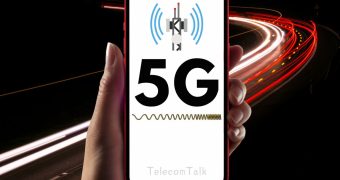
The Central government's decision to delicense the lower 6 GHz spectrum band (5925 MHz to 6425 MHz), paving the way for the rollout of next-generation Wi-Fi technologies such as Wi-Fi 6E and Wi-Fi 7 will boost innovation in the country, Union Telecom Minister Jyotiraditya Scindia said on May 27, according to a report by ETTelecom.
Also Read: Centre Notifies Draft Rules to Delicense Lower 6 GHz Band for Wi-Fi Use
6 GHz Band to Supercharge Wireless Performance
Speaking at an industry conference on Tuesday, Scindia said the move would significantly enhance internet speeds, reduce latency, and improve network capacity across the country. "We have just delicensed 500 MHz in our 6 GHz spectrum, and this will roll out these new, next-generation technologies like Wi-Fi 6E and Wi-Fi 7, which will result in higher speeds, ultra-low-latency, and seamless capacity," he said.
"With this technology, offices will no longer remain the hub of innovation. Our homes, each individual home, each rural hamlet, will become the hub of innovation in the days to come," the union minister added, according to the report.
Global Context
The 6 GHz band is capable of supporting broadband speeds of up to 9.6 Gbps—considerably higher than the 1.3 Gbps offered by the 5 GHz band and the 600 Mbps supported by the 2.4 GHz band. Globally, countries such as the US, the UK, and South Korea have already opened up this spectrum for unlicensed use, facilitating faster and more reliable wireless connectivity.
COAI and BIF: What Did COAI and Broadband India Forum Say About Spectrum Refarming?
Wider Access, Rural Reach, and Innovation
Scindia highlighted that the availability of this spectrum would democratise innovation beyond urban centres. "I believe that broadband is no longer a pipeline, but is a platform for progress. Now we have to ensure that this platform for progress reaches every hand, lights every home, and reaches every corner of our country," he was quoted as saying in the report.
Until now, Wi-Fi services in India have been restricted to the 2.4 GHz and 5 GHz bands, which are increasingly congested due to the exponential growth in connected devices. The addition of the 6 GHz band is expected to ease spectrum strain and support data-intensive applications such as 4K streaming, online gaming, augmented and virtual reality (AR/VR), and the burgeoning Internet of Things (IoT) ecosystem.
A Policy Tug-of-War
The decision follows sustained demand from the technology industry, including the Broadband India Forum (BIF), which had urged the government to delicense the lower portion of the 6 GHz band for Wi-Fi. In contrast, telecom operators under the Cellular Operators Association of India (COAI) had advocated for the auctioning of the entire 6 GHz band for use in future 5G and 6G networks.
Also Read: Telcos to Oppose DoT’s Move to Delicense Lower 6GHz Band, Citing 5G Expansion Concerns
BharatNet and Emerging Tech
Scindia also called on the industry to enhance the use of BharatNet infrastructure and suggested adopting fibre-sharing models to expand broadband reach. He encouraged companies to empower local entrepreneurs and drive the digital onboarding of citizens.
"I would suggest to you six foundational pillars on which our mission has to be based. These are affordability, availability, accessibility, quality, safety, and the use of emerging technology such as AI, IoT and satellite to reach the last mile," Scindia reportedly said.
You can also join the TelecomTalk WhatsApp Community and TelecomTalk WhatsApp Channel for updates and discussions.















